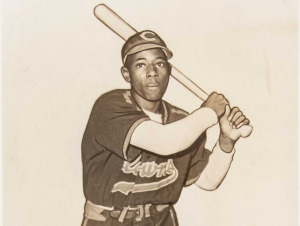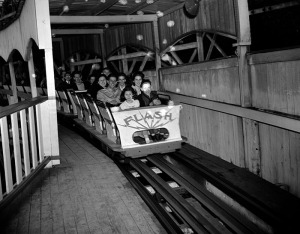
Hank Aaron’s Indianapolis Clowns postcard sells for nearly $200K at auction
The rare souvenir postcard picturing Aaron as a rookie with the Clowns of the Negro Leagues sparked a bidding war that soared past the pre-sale estimate of $5,000 to $10,000, Hunt Auctions said.


